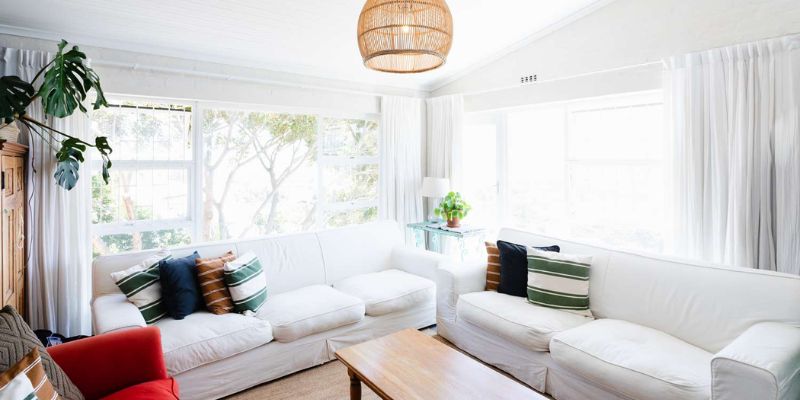Here is our complete rundown on positioning the lamps in your living room so that you can enjoy the best optimal lighting. Getting the lighting just right can do wonders for the mood and functionality of any room. In this article, we will share with you some tried-and-true methods for making your living space bright and welcoming. We’ll be diving into the world of “How to Position Lamps for Optimal Lighting in the Living Room?”.
Testing Living Room
It’s crucial to evaluate the layout and lighting needs of your living area before getting into the intricacies of lamp placement. Think about what I’ve listed below:
Sources of Natural Light
Think about the windows and skylights in your living room and how they affect the ambience. Determine how much daylight you get in different times of the day. This will guide you in deciding where and how to add more light to enhance the current setup.
The Form and Size of the Room
Think about the proportions of your living space. The way light is diffused around a room can be affected by factors such as furniture placement, wall color, and building design. Lighting a room effectively requires careful consideration of its layout.
Domains of Operation
Partition your living room into its several uses. Seating areas, reading nooks, recreation spots, and office space are all examples. To perform its function, each space may need a unique lighting scheme.
How to Position Lamps for Optimal Lighting in the Living Room?
After taking stock of your living area, you may choose lights that both enhance the space and meet any specific lighting needs you may have identified. When picking light fixtures, keep the following in mind:
Types of Lamps
Choose lighting fixtures whose designs complement those of the room. There is a plethora of lights to choose from, whether you’re looking for something modern, traditional, or eclectic. Choose lamps for your living room that not only illuminate the space well but also add to its aesthetic value.
Various Bulbs for Light
Bulb varieties range in lumen output, color rendering, and power consumption. Pick light bulbs that can both provide the mood you’re going for and give you the light you need to do things in the living area. Because of their extended life and low energy use, LED bulbs are a great option.
Lamp Size and Height
The size and placement of the lamps should be taken into account. Rooms with high ceilings benefit from taller lamps, while smaller lamps are better suited to rooms with lower ceilings. Incorporate bulbs of varying heights and sizes to achieve a well-balanced illumination of the space.
Strategically Placing Lamps
Now that you have the correct lamps, let’s talk about how to strategically put them in your living room to get the best possible lighting:
Natural Light
Get things started with some general ambient lighting. This ambient lighting completes the ambiance of the space and provides adequate illumination. Lighting a room evenly requires lamps to be strategically placed near walls and corners.
Task Lighting
Task lighting is essential for tasks like reading and working, where focused illumination is required. Place lamps that can be adjusted, such as desk lamps or floor lamps with swing arms, near where you plan to sit or work. This way, you may reduce eye strain by directing bright light directly where it’s needed.
Feature Lighting
Accent lighting is a great way to set the mood in your living room and draw attention to specific features. Highlight certain highlights of a room’s decor, such as artwork or architectural details, with track lighting, picture lights, or wall sconces.
Illumination in Depth
Combine ambient, task, and accent lighting for a dynamic and multi-dimensional effect. By using a combination of lighting techniques, you may add dimension and style to your living space. Find the right amount of light by trying out different bulb setups.
Conclusion
Congratulations! You now have the knowledge of a lighting expert on how to best place lamps in your living room. To make a room feel warm and welcoming, you should measure the area, pick the proper lamps, and put them in the right spots. Take use of the room-altering potential of good illumination and turn your living space into a relaxing, productive, and social hub.

